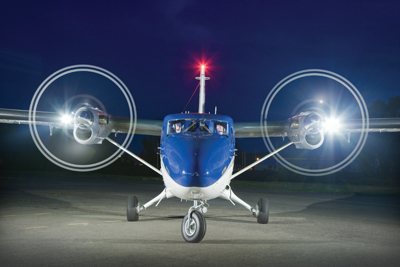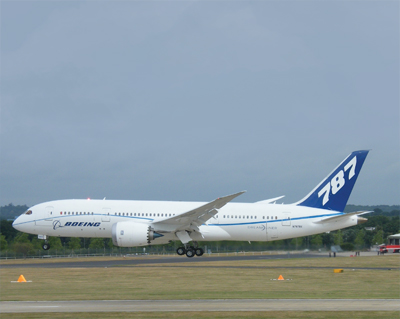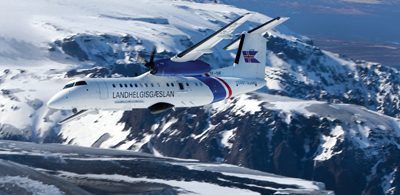
Features
Operations
Canada on the world stage
We’re here to sell what Thompson has a lot of – minus 40 degree Celsius weather,” said Roxie Binns, development coordinator at Thompson Unlimited, Thompson’s Economic Development Corporation. “If anything is going to break in your airplane, it will do it at these temperatures.” It was a quintessentially Canadian moment. This Manitoba town was at Farnborough selling its bone-chilling climate as a centre for aerospace testing.
September 27, 2010 By Peter Pigott
We’re here to sell what Thompson has a lot of – minus 40 degree Celsius weather,” said Roxie Binns, development coordinator at Thompson Unlimited, Thompson’s Economic Development Corporation. “If anything is going to break in your airplane, it will do it at these temperatures.” It was a quintessentially Canadian moment. This Manitoba town was at Farnborough selling its bone-chilling climate as a centre for aerospace testing.
 |
|
Held from July 19-25, the biennial Farnborough International Airshow (FIA) began in 1948 to demonstrate the best of British aviation. The theme for FIA 2010 was “World of Opportunities” and 1,350 companies and organizations from 50 countries gathered at the Hampshire field to seize those opportunities and showcase the best that they had to offer in aviation.
Given the airfield was crammed with sleek aircraft and hospitality chalets, it was hard to believe the aviation industry worldwide was suffering through austerity. The two aerospace giants, Boeing and EADS, battled it out overhead with high profile demonstrations of their latest aircraft. When the long awaited Boeing 787 Dreamliner touched down at Farnborough at 9 a.m. on July 18, its pilot said the flight from Seattle was an intrinsic part of its test program; but aviation analysts knew it had more to do with the 21 per cent drop in the company’s second quarter earnings and that Boeing needed many more orders for the 787 – and soon. The Airbus A400M made its Farnborough debut on the 19th, putting on a show of mind-numbing twists and turns – even as European countries were tightening their belts and renegotiating their orders for it. “Cuts,” said one aviation analyst, “are on everyone’s agenda this year.”
With the U.S. and European aerospace companies facing a raft of uncertainties, this Farnborough was all about the second tier aviation countries – India, China, Russia, Brazil, Pakistan – and Canada. Of these, it was Canada that excelled. At Farnborough 2010, the country literally strutted its stuff. The Honourable Tony Clement, Minister of Industry, led the federal government’s delegation and toured the Canadian stands centred in Hall 4 on the site. With sizeable provincial participation at Farnborough, Ontario’s Minister of Economic Development & Trade, The Honourable Sandra Pupatello was also present. At the show, Ontario Aerospace Council executive director Rod Jones commented that by all reports received to date, Farnborough this year had been a very successful show for Ontario.
“The overall industry outlook is positive and the participating Ontario companies who commented to me about their results were all highly positive,” he said.
Jean Teasdale, vice president of Real Estate and Commercial Services, Aéroports de Montréal said, “Taking in both Mirabel and Dorval airports, we are the largest industrial park dedicated to the aerospace industry in Canada – certainly one of the top five in the world. We have the home of Bombardier CSeries, the Pratt & Whitney engine testing centre, corporations like GE, Mecachrome CANADA Inc. and affiliated companies of SNECMA – so most of the big players are in our parks and we come here not only to meet our clients, but to look for prospective others.
 |
|
| The long-awaited Boeing 787 Dreamliner arrives at Farnborough. |
For Kimberley Van Vliet, the president and CEO of WAVV Business Development of Calgary, it was about taking advanced technology companies through research and development. “Our other line of business is to connect those companies if they are looking to diversify into aerospace. We’re a boutique firm because what we do is so specialized.” Also a board member on Aviation Alberta, Van Vliet had just come from the Alberta Defence Industries symposium in Calgary to kickstart Canadian technology locally and also educate the military as to what is available.
Hailing from British Columbia, it was hard to miss Viking Aircraft’s pristine Twin Otter outside the company’s chalet. “We restore old de Havilland aircraft, putting them back on the market,” said Robert Mauracher, vice president business development of Viking Air Ltd. “For us, Farnborough is an opportunity to show our newest product – the Twin 400 series – we flew it over in the colours of our launch customer.”
Viking is a small company with 500 employees in two facilities – head office and parts manufacturing in Victoria, and final assembly in Calgary. Small suits them just fine, said Mauracher. “We don’t want a huge workforce where we don’t know everybody; we want to keep it friendly.”
More Canadian content
The flagship of Canadian aerospace at Farnborough was definitely Bombardier, which had on glittering display, the Learjet 60 XR, large cabin Challenger 605 and long-range Global 5000 business jets, as well as the Q400 NextGen turboprop airliner. Senior public relations representative Haley Dunne spoke to Wings about Bombardier’s experience at the show from the luxurious Global 5000. “Two Global 5000s have been bought by Qatar Airways for Qatar Executive, and also AV West, an Australian company, bought four Global Express business jets,” she said. “EBACE is our big show where we meet a lot of our customers. Then in the time between both shows, we have a lot of time to start conversations, get things going so when Farnborough comes along, hopefully they will be starting to commit. Even if we do not sign deals, this is an opportunity to meet with our European customers.” Later that week, Bombardier Aerospace announced Australian flag carrier, Qantas Airways Ltd., had placed a firm order for seven Q400 NextGen turboprop airliners and VistaJet of Switzerland had ordered four Global Express XRS aircraft and two Challenger 605 jets.
Representing ADIANL (Aerospace & Defence Industry Association of Newfoundland and Labrador), Sharon Beattie pointed out the success of the St. John’s company IDBLUE. IDBLUE had secured a global partnership with Ramco Systems – Global Aviation Solutions, to provide end-to-end RFID solutions within the aerospace sector for the purpose of MRO, aircraft and component, data identification, tracking, enhanced line maintenance and performance based utilization. “FIA 2010 allowed us to further relationships and continue development in programs we are currently engaged with,” said Jeff Brown, vice-president of Services, IDBLUE.
Field Aviation from Mississauga, Ont. was another Canadian company present at the show. Joar Gronlund, chief operating officer, spoke about his company that specializes in aircraft modifications like special mission adaptations. “We have a fairly good dominance in the large turboprop market and meet here with a number of customers showcasing what we do,” he said. With more than 30 maritime surveillance aircraft ordered for six countries, Gronlund was a mine of interesting stories. Topical among them was the oil spill detection in the Gulf of Mexico. “Both the Swedish and Icelandic coast guards specified that the Dash 8s we did for them had to be able to do the mapping of an oil spill and control the maritime traffic at the same time. You use your side-looking radar to do the mapping and your search radar to control the shipping so you can follow the offender all the time. In the Gulf with this you can position the recovery ships and oil booms in the optimum location. What you get is basically an airborne control centre.”
 |
|
| A special mission Dash 8, modified by Field Aviation and flown by the Icelandic Coast guard, flies close to the glacier where the volcano erupted in Iceland.
|
For the Swedish and Icelandic Coastguards, Field bought the aircraft from Bombardier and the sensors from L-3 and assembled the whole package at Pearson. “One of the three aircraft the Swedish coast guard bought from us was contracted by the European Union for four months to do surveillance against Somali pirates. With our equipment they did a significant job of detecting the pirate mother ships. So these Canadian products are seen worldwide.” But Gronlund added, Field Aviation was here ready with the order book for more.
Rick Williams of Defence Research and Development Canada (DRDC) weighed in on what his organization gets out of Farnborough. “A presence, an awareness, and the opportunity to network on the international stage with stakeholders. We bring potential customers up to speed with what we’ve done.” DRDC was not selling a product, but by its nature was acting as a network organization, bringing groups together with ideas. Williams already had met with the British Science and Technology Laboratories to sign a project agreement on enhanced collaboration of science and technology demonstration projects between Canada and the United Kingdom. “We have three pilot projects with them and one is for “green” self sufficient Forward Operating Bases (FOB).” When asked how the FOB connected with green technology, Williams commented, “One of the big things about FOBs is you have to get energy in and waste out.”
“You have to have a big logistics footprint to supply them so what we’re looking at are systems that can manage the power for living and electronics – through green technology from solar cells to wind turbines. The challenge of an FOB is it is a fighting base so you have to take these green technologies and blend them in to the fighting environment so that it is not vulnerable. We should call it a ‘Mean, Green Fighting Machine.’ We are exposing Canadian industry to these projects and the Brits can take advantage of this. So it’s a win-win on both sides.”
Marc Whittingham, president and CEO of Canada’s international contracting and procurement agency wanted the Canadian Commercial Corporation (CCC) to become better known by European buyers and Canadian exporters. When asked if there were any contracts for the crown corporation so far, Whittingham spoke of “Soteria,” a consortium that had been down selected earlier in the year to provide SAR services in the U.K.
“CCC was working with CHC as part of that deal. If the contract is ultimately awarded, we will be the contractor between Soteria and CHC, which is one of the consortium partners. Part of the reason for that is what the Canadian government brings to the table. We guarantee the Canadian contractor’s performance – and on the other side, Canadian companies feel its much more effective to have the Canadian government as a partner; it mitigates their risk. We sign the contract with the foreign government, or in this case, the Soteria, and then we subcontract it to the Canadian contractor. We sit down with the Canadian contractor and negotiate the terms with the buyer like any partnership. And, we pass the terms and conditions through to the domestic contractor – in this case CHC. When things go smoothly, that’s fine, but when they don’t, we’re able to bring the full Canadian government perspective to the equation. For example, in keeping with aerospace, we’re building the new international airport in Quito, Ecuador with the Canadian engineering and construction team of AECON. When completed, it will be a landmark international venture for Canada and an economic engine for Quito and Ecuador.”
By the last day of the Farnborough Airshow, the gloom had lifted – somewhat. Hoping this was a sign of a dying recession, EADs welcomed a stream of new orders and Boeing said it was considering a production hike to meet demand. But at the Canada Pavilion, the mood was as ever ebullient. For as Ontario’s Minister of Economic Development & Trade, The Honourable Sandra Pupatello said: “We came, we saw, we conquered.”